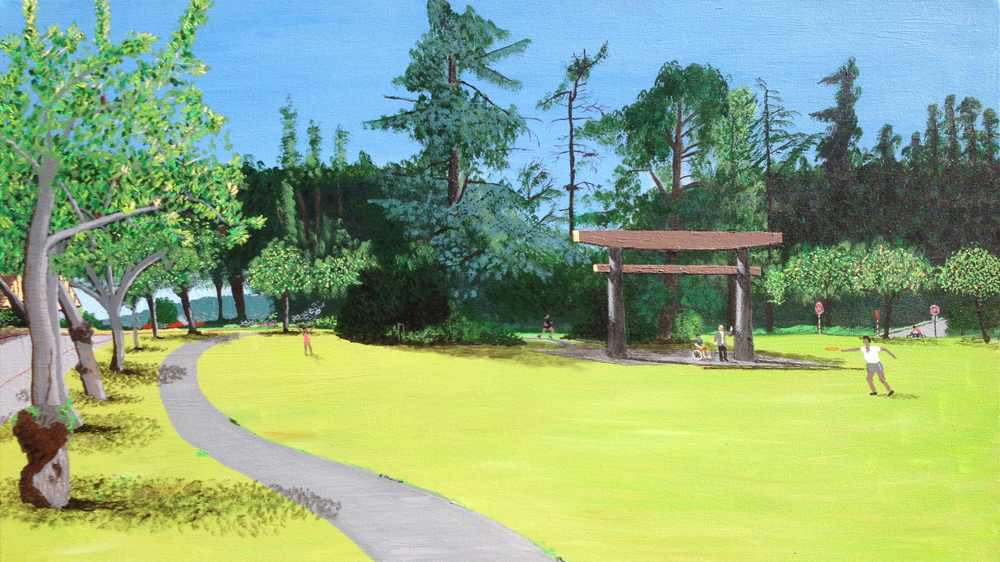By Nina Huang
Northwest Asian Weekly

Proposed new torii at Seward Park (Painting by Ted Weinberg)
As Seward Park anticipates a rebuild of the torii gate that used to welcome visitors to the park, Jerry Arai hopes to dedicate park benches to two very special people in the community.
A retired architect and community volunteer, Arai wants to donate and dedicate two benches for Seward Park.
The first one would be dedicated to his father, Kichio Allen Arai, who designed the original torii gate.
“He helped mainly Japanese Americans before the war, and he designed a bunch of Buddhist churches around the Northwest, among others. I want to dedicate something to him for what he did for us, the second and third generation Japanese, and some of the other minorities,” he said.
Arai hopes to dedicate the second bench to Ike Ikeda, who passed away late last year.
“He was a very unusual person because he helped all minorities – Blacks, Southeast Asians, Chinese – he helped them all in different ways. They had a memorial service and the reverend brought up the subject of how he believed in ‘why not?’” Arai explained.
“He tried to make things happen when it didn’t seem like it was possible,” Arai described Ikeda.
Arai hopes to have a special poem engraved into the benches. For the bench dedicated to Ikeda, Japanese American poet Suma Yagi and the late Aki Kurose’s sister is in the process of writing a personalized poem about Ikeda. And for the bench dedicated to Arai’s father, another local Japanese American poet, Larry Matsuda, wrote a poem about Japanese Americans and their experience going through the internment.
The benches are a part of the overall torii gate rebuild project. The original torii was a gift of the Seattle Japanese Chamber of Commerce to the City of Seattle in 1934, and stood as a symbol of goodwill from Seattle’s Japanese American community. The torii was adopted as a symbol for the Seward Park Centennial in 2011, and community members suggested restoring it.
Construction of the new torii designed by Scott Murase, as well as the benches, should begin this fall, and take about a year to complete. President of Friends of Seward Park, Paul Talbert, said that they have raised over 80 percent of the funds needed.
Tsuchino and Mike Forrester, and the Stim Bullitt Parks Excellence Fund, were huge contributors for the park’s rebuild.
Talbert, who has been involved with the park since 1999, sees the Japanese influences in the park as an important symbol of the enduring quality of friendship between the Japanese and Americans. In addition to the symbolism, Talbert is passionate about the park because it has the largest stand of old growth trees left in Seattle.
“There’s also a lot of wildlife you don’t see elsewhere, and it’s just a really special place,” he said.
The new torii gate will be located 15 feet away from the original torii. Since the original torii had been taken down in the mid-1990s, Talbert said that a part of the old torii gate is now at the Wing Luke Museum.
Arai said that his large family will be coming together for a reunion in the next couple of months from the West Coast and Japan. He hopes that they will be able to help donate to the bench for the park.
He also hopes that Seward Park will continue to be a place where people can go and remember things. He mentioned that when the Japanese first moved to Washington and saw Mount Rainier, they felt an immediate connection because it reminded them of Mount Fuji.
To learn more about the Seward Park torii project and to donate, visit www.sewardparktorii.org.
Nina Huang can be reached at info@nwasianweekly.com.



